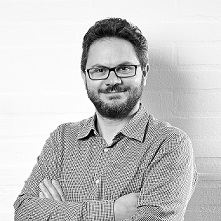Tutorials
3rd June – 7th June 2019, Eskalduna, Bilbao, Spain
euspen’s 2019 extensive tutorial programme will cover a range of key topics for the precision engineer
Whilst covering a clear technical curriculum, tutorials are less formal than a lecture; providing more personalised learning in a social atmosphere.
They incorporate existing challenges in the workplace which cover conceptual theories through to best practice applications.
These tutorials will take place on Monday 3rd June 2019.
Tutorial 1: Micro Nano Injection Molding
Room Despacho 3-1 at Euskalduna Jauregia
Monday 3rd June 2019
Time: 08:30 – 11:30
The tutor is Professor Guido Tosello, Department of Mechanical Engineering, Technical University of Denmark
Micro injection molding is the preferred process technology for the mass production of polymer micro components and micro-nano structured parts. Micro molded parts are characterized by dimensional tolerances in the micrometer range, high surface finish in the sub-µm down to optical range, high geometrical complexity and micro-nano structured surface.
Micro injection molding is used to manufacture highly valued micro medical components (sensors, implants, tubes, catheter tips), micro optics, micro fluidic systems, micro mechanical systems. The global market of micro injection molding is expected to reach USD 1 billion by 2020 with a compound annual growth rate between 10%-15% in the period 2013-2020. High demand of micro molded parts is seen from the medical, healthcare, automotive, electronics sectors.
To exploit the micro molding technology process capabilities and take advantage of research and market opportunities, specific knowledge is necessary to overcome the challenges of successfully managing and processing polymer materials at these ultra-small scales. The tutorial ‘Micro Nano Injection Moulding’ will meet that need. Micro injection molding is indeed not just a simple downscaling of conventional injection molding, and specific material-process-product interactions must be understood in order to achieve near zero-defect net-shape micro molded products.
The tutorial will provide a comprehensive, up-to-date and detailed treatment of the main topics related to micro molding. It includes the underlying physics of micro polymer processing and replication at the micro/nano scales, fundamentals of micro molding machine construction and tooling technologies, statistical process control and optimization, quality control and metrology of micro parts, micro product prototyping, process simulation.
Intended for
The tutorial “Micro Nano Injection Molding” is of interest for researchers, engineers, project managers in both the scientific and industrial communities involved in precision polymer processing and micro manufacturing.

Guido Tosello, PhD, is Associate Professor at the Technical University of Denmark, Department of Mechanical Engineering. He is senior lecturer, research manager, and consultant for the manufacturing industry. Guido’s principal research interests are the analysis, monitoring, optimization, and simulation of precision molding processes at micro/nano scales. Guido Tosello is the recipient of the “Technical University of Denmark Best PhD Research Work 2008 Prize” for his PhD thesis “Precision Moulding of Polymer Micro Components”; of the 2012 Alan Glanvill Award from the Institute of Materials, Minerals and Mining (IOM3) (UK) for research of particular merit in the field of polymeric materials; of the Young Research Award 2014 from the Polymer Processing Society (USA) for research excellence in polymer processing within six years from PhD graduation; and of the Outstanding Reviewer Award 2016 of the Institute of Physics (UK) for his contribution to the Journal of Microengineering and Micromechanics.
Guido Tosello is the Coordinator of the EU Horizon2020 European Innovative Training Network projects MICROMAN (Process Fingerprint for Zero-defect Net-shape MICROMANufacturing, http://www.microman.mek.dtu.dk) and DIGIMAN4.0 (DIGItal MANufacturing Technologies for Zero-defect Industry 4.0 Production, http://www.digiman4-0.mek.dtu.dk).
He is the Editor of the book ’Micro Injeciton Molding’ published in 2018 by Carl Hanser Verlag.
Tutorial 2: Areal Surface Metrology: Instrumentation and Characterisation
Room Sala C1 at Euskalduna Jauregia
Monday 3rd June 2019
Time: 08:30 – 11:30
The tutor is Professor Liam Bunt, Advanced Metrology Hub, University of Huddersfield
The tutorial will cover an introduction to two aspects of areal surface metrology;
The first session will cover the major techniques for capturing areal surface information. The lecture will include; contact stylus technologies, confocal microscopy, optical Interferometry, Atomic Force Microscopy and its relevant derivatives.
The second session will cover the methodologies for surface data characterisation and will include areal parameters as outlined in ISO25178. The seminar introduce the distinction between field parameters and feature parameters. In addition the ideal of the scale limited surface will be outlined as will relevant data filtering tehniques. Where appropriate the seminar will be illustrated with appropriate case study exemplars.
Tutorial 4: Passive Damping in Mechatronics Systems by means of Polymers
Room Sala C3 at Euskalduna Jauregia
Monday 3rd June 2019
Time: 08:30 – 11:30
Specifications on the dynamic position stability of systems become increasingly tighter. A very effective and robust way to improve the system dynamics is by adding damping. This can either be done in an active (e.g. feedback control) or in a passive manner. In several applications, passive damping can be considered as an excellent alternative to active damping, or can even be an addition to active systems to suppress resonances which limit the controller bandwidth and to increase the robustness of the system.
The focus of the course is on viscoelastic material damping, on the reason of simplicity, cost and robustness compared to other passive damping principles.
Viscoelastic materials are applied in the past in various applications to achieve damping, however in many of these applications the precise performance is less critical and often by ‘trial and error’ the design is realized. In our high-end performance applications, the complexity, requirements and conditions are such that extensive modelling is necessary and predictability of the final performance is crucial for a successful design of the entire system. The tutorial focusses on visco-elastic material properties, modelling and designing with viscoelastic materials in a predictable manner.
Tutorial subjects
- Understanding the dynamic behaviour of viscoelastic material (frequency and temperature dependence)
- Material characterization and modelling of viscoelastic materials dynamically
- Dynamic system modelling with viscoelastic materials
- Examples by means of several cases: high and low frequency applications
- During the course the participant will be actively involved by means of example cases (hand calculations need to be done)
- Several example materials and designs will be shown.
The course covers the basics on viscoelastic material properties, relevant for damping applications in mechatronic systems and offers the participant a methodology for designing with viscoelastic materials, in a predictable manner
Intended for
The tutorial is aimed at engineers and physicists, dealing with vibrations and resonances in precision machine design and seeking passive damping solutions by means of polymers. The emphasis of the tutorial is to apply passive damping with viscoelastic materials in a predictable manner, to significantly improves the dynamic system performance.
Tutors
Dr. Theo Ruijl (1967) studied Mechanical Engineering in Eindhoven (The Netherlands) receiving his MSc in Tribology in 1994. Within the Mechatronics Department at Philips Research he made his Ph.D. on the design of a Ultra Precision CMM.
For more than 20 years he is active in de development of high-end mechatronic systems for all kind of precision application e.g. in the semi-conductor and medical industry.
Theo is a member of the Euspen Council, where he co-initiated in 2006 the Special Interest Group of Thermal Effects in Mechatronics Systems.
After working at FEI Electron Optics, the joined in 2010 Mi-Partners, a Dutch engineering company in Eindhoven, focusing on mechatronic development, where he holds the role of CTO. Since the beginning of joining Mi-Partners, he initiated the competence of passive damping with polymers. Several projects has be done successfully since then, showing that this technology can be used in high-end mechatronic applications in a systematic and predictable approach..
Theo teaches over 20 years several classes in the field of Mechatronics Systems Design: tutorials and technical courses at universities related to Dynamics & Control, Thermal, Metrology, and Damping with Polymers.
Ir. Ing. Pieter Wullms (1985) studied Mechanical Engineering in Eindhoven (The Netherlands) receiving his MSc in Mechanical Engineering in 2011.
After finishing his Master thesis at MI-Partners, he joined the company in 2011, where he holds the position of mechatronic system designer and is the competence leader for passive damping competence.
He has been involved in various training activities related to damping with Polymers.
Tutorial 6: Design Concepts for Sub-Micrometer Positioning
Room Sala B3 at Euskalduna Jauregia
Monday 3rd June 2019
Time: 08:30 – 11:30
The tutor is Huub Janssen, JPE B.V
Tutorial Intention
The tutorial is meant for mechanical designers entering the field of precision engineering where positioning down to nanometric levels is required.
The course will give some theoretical background, but is mainly focusing on practical implementation of various design solutions which can be used in this field of engineering.
By introduction of practical cases, a good understanding of the critical issues which could compromise high precision will be highlighted and design solutions will be presented and discussed.
Summary of the course content
- Principles for accuracy, play, stiffness, friction.
- Definition of positioning terminology: Accuracy, repeatability, resolution, stability.
- Discussion of practical case in order to determine items compromising position accuracy.
- Design solutions and mechatronic context.
- Compliant mechanisms, flexure design.
- Use leaf springs instead of roller bearings. Advantages / disadvantages
- Thin plate design (torsional stiffness)
- Example: Mechatronic positioning challenge
Tutor
Industrial and academic background
Ir. Huub Janssen (1959) studied mechanical engineering at the university of Eindhoven (the Netherlands) with a focus on precision engineering.
After graduation in 1984, he joined ASML where he was involved in the mechanical development of the first, high performance, electric wafer stage and theoretical analysis of various positioning disturbance factors.
In 1987 he joined Philips where he was responsible for technical specification and organization ofequipment for fabrication and testing of liquid crystal displays.
In 1991 he started his own company: Janssen Precision Engineering which recently is renamed and is now called JPE B.V. Nowadays with about 20 employees, JPE B.V. is a leading center of expertise inprecision engineering and develops unique solutions in the field of high-tech equipment and scientific instruments.
Number of years teaching experience
In the JPE B.V. company, next to his managing activities, Huub Janssen is a technical coach for his employees. Apart from this, he acts as a course leader for “Design Principles or Precision Engineering” course organized by the HighTech Institute.
Scientific and technical level of expertise
- Publications: > 5 (SPIE)
- Patents: > 30


